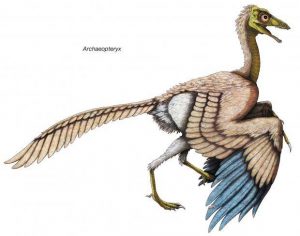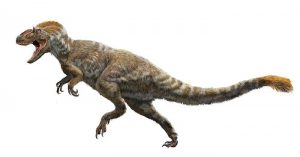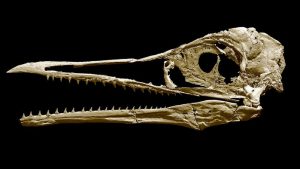In today’s world the taxonomic group we call birds have two unique anatomic characteristics that no other animals possess, feathers and beaks. Trying to understand how these distinct features evolved has been a goal of paleontologists since Darwin’s days.
Considerable progress has been made in the study of feathers with the discovery not only of early birds with feathers like Archaeopteryx but also of new evidence that some species of dinosaurs sported primitive feathers for insulation. The images below show archaeopteryx and a feathered T-rex (yes some paleontologists think the mighty T-rex might have been partially covered by feathers).


Evidence for the evolution of the bird’s beak however is much sparser; and the development of the beak is mostly unknown. Beaks by the way are composed of bony upper and lower mandibles (jaws) that are covered by a thin later of keratin (the protein in your hair and fingernails) and which lack teeth composed of dentine. Although similar in some ways to the mouths of other vertebrates the avian beak is a structure unique to birds.
The big problem in studying the development of the beak is that usually the delicate bones making up the skull of an early bird are so squashed that little can be learned from them. One thing we were certain of however was that feathers came first; there are many fossil specimens, again like Archaeopteryx, of early birds covered with feathers but sporting a mouthful of teeth.
Now a new study, combining both recent fossil finds and a reexamination of older specimens with the latest instruments, is changing that. It started in 2014 when Kristopher Super, then an undergraduate student at Fort Hays State University in Kansas, found an almost complete fossil of the well know early bird Ichthyornis dispar encased in limestone. A transitional species between the dinosaurs and birds I. dispar was a seagull sized creature that lived between 66 and 100 million years ago.
When the find was shown to Yale Professor of Paleontology Bhart-Anjan Bhullar he suggested that instead of trying to remove the specimen from the limestone it should be scanned by computerized tomography (CT scanning). What they found led them to perform CT scans on three other fossils for conformation. There, right at the very end of a long bony jaw filled with very sharp teeth sat a tip covered in keratin, a beak. Professor Bhullar suggests that even a tiny tip of a beak may have given I. dispar a greater ability to manipulate its food and preen its feathers. Exactly the behavioral activities that modern birds use their beaks for. The image below shows a composite of the CT scans of I. dispar.

The scientists also found that the skull of I. dispar shared a mixture of dinosaur and bird like features, a large brain case like that of a bird along with the powerful jaw muscles of a velociraptor like dinosaur. The evidence provided by I. dispar pushes back by millions of years the development of the bird’s beak while at the same time indicating that birds may have existed for millions of years with both a partial beak and a mouthful of teeth. The image below shows an artists rendering of the head of Ichthyornis dispar.

The first fossils of Ichthyornis were discovered in the 1870s by the US paleontologist Othniel C. Marsh, famous for his ‘Dinosaur Wars’ with Edward D. Cope. Even after almost 150 years we’re still leaning more about these amazing dino-birds.
